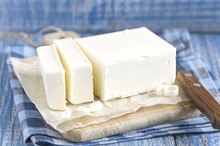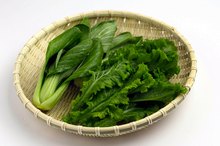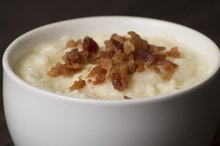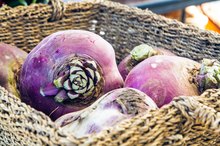What does fact checked mean?
At Healthfully, we strive to deliver objective content that is accurate and up-to-date. Our team periodically reviews articles in order to ensure content quality. The sources cited below consist of evidence from peer-reviewed journals, prominent medical organizations, academic associations, and government data.
- Linus Pauling Institute: Dietary Fiber
- National Diabetes Information Clearinghouse: Diabetes Overview
The information contained on this site is for informational purposes only, and should not be used as a substitute for the advice of a professional health care provider. Please check with the appropriate physician regarding health questions and concerns. Although we strive to deliver accurate and up-to-date information, no guarantee to that effect is made.
Can Diabetics Eat Yellow Squash?
Yellow squash is a general term for a variety of summer squashes that come in shapes that include crookneck, zucchinilike and patty pan. A source of vitamin C, vitamin A, lutein and zeaxanthin, yellow squash can be a regular component of a healthy diet for people with diabetes to control blood sugar levels.
Healthy Meals With Yellow Squash
Many individuals with diabetes should consume 45 to 60 grams of carbohydrates per meal to reduce unhealthy fluctuations in blood sugar levels. A cup of cooked yellow squash contains 6.8 grams of carbohydrates. For breakfast, you could have egg whites scrambled with yellow squash, a whole-grain English muffin and a small pear. Lunch could include soup made with low-sodium beef broth, yellow squash and other vegetables, and 1/2 cup of kidney beans. Have a container of plain, fat-free yogurt and some berries for dessert. For dinner, serve grilled chicken breast with one-half of a large baked potato, yellow squash and a slice of whole-wheat bread.
- Many individuals with diabetes should consume 45 to 60 grams of carbohydrates per meal to reduce unhealthy fluctuations in blood sugar levels.
- For breakfast, you could have egg whites scrambled with yellow squash, a whole-grain English muffin and a small pear.
Dietary Fiber
Coleslaw for Diabetics
Learn More
Yellow squash can be healthy for individuals with diabetes because each cup of cooked crookneck squash provides 2 grams of dietary fiber. Dietary fiber helps lower blood sugar levels after you eat a meal, and you should try to consume 14 grams of fiber per 1,000 calories in your diet, according to the 2010 Dietary Guidelines for Americans 2. Make a high-fiber side dish with yellow squash, black beans, red bell peppers, chili power and cumin.
Limit Saturated Fat
Diabetes increases your risk for heart disease, but a diet low in saturated fat reduces your risk. Yellow squash can fit into your diet for diabetes because it is fat-free. Eat your squash raw or steam, grill or roast it to keep it fat-free. If you saute it or brush it with fat before roasting it, use vegetable oil or olive oil instead of butter, which is high in saturated fat. Another way to limit saturated fat is to use lean ground turkey instead of ground beef for making stuffed squash.
- Diabetes increases your risk for heart disease, but a diet low in saturated fat reduces your risk.
- If you saute it or brush it with fat before roasting it, use vegetable oil or olive oil instead of butter, which is high in saturated fat.
Limit Sodium Consumption
Diabetics and Butter
Learn More
Diabetes is a risk factor for high blood pressure, kidney disease, heart disease and stroke. Following a low-sodium diet, with no more than 1,500 milligrams of sodium per day, can help you control your blood pressure. A cup of cooked yellow crookneck squash is suitable for a low-sodium diet because it contains only 2 milligrams of sodium. Squash cooked with salt contains 427 milligrams of sodium per cup.
- Diabetes is a risk factor for high blood pressure, kidney disease, heart disease and stroke.
- A cup of cooked yellow crookneck squash is suitable for a low-sodium diet because it contains only 2 milligrams of sodium.
Related Articles
References
Writer Bio
Natalie Stein specializes in weight loss and sports nutrition. She is based in Los Angeles and is an assistant professor with the Program for Public Health at Michigan State University. Stein holds a master of science degree in nutrition and a master of public health degree from Michigan State University.









